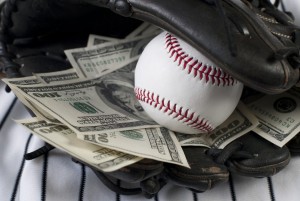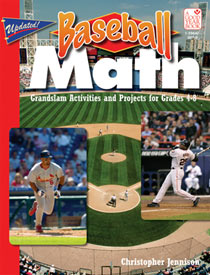Today’s post is Part One of Two, the “Pro” argument in a NerdsOnSports exclusive debate over “Moneyball” – or stats-driven baseball management. Serpico takes the opposing side elsewhere.
My argument is that a manager can derive superior value in his team by managing based on statistics, rather than what are commonly called “intangibles.”
Consider the following:
(1) The object of a baseball game is to score more runs than the opposing team.
(2) Baseball does not have a clock; it ends when each team suffers 27 outs.
(3) Given 1 and 2, the team that can score more runs while suffering fewer outs will win a ballgame.
(4) Players earn runs by advancing along the basepaths. This can be done either by hitting or by being advanced through a walk or pitcher error (balk, etc).
(5) There is a fixed pool of available players for any given season. There are a fixed number of positions in the starting lineup – nine, to be precise.
As Kevin Bacon said in A Few Good Men, these are the facts of the case, and they are not in dispute. Those are the rules of baseball. All of the above are objectively true.
From that, I will assert the following:
(6) Given #4, a statistic which measures all the ways that a player can advance along the bases (for instance, on-base percentage) will be a more useful tool in evaluating a player than a statistic which does not (for instance, batting average).
That right there is the core of Moneyball – the idea that many traditional statistics, such as stolen bases, RBIs and batting average are not as useful as OBP, slugging or VORP.
Consider: RBI is the number of runs a player bats in. But in order to hit in a run, another player needs to have advanced to scoring position. So your RBI stat hinges on the scoring ability of the player before you in the lineup. This changes every time the lineup is altered, or every time you change teams, but no one thinks to qualify RBI with a little asterisk.
Batting average is neat, too, but it doesn’t measure the times that a player will advance a base through being walked. And for the big hitters like David Ortiz, Rickey Henderson or Joe Morgan, bases on balls constitute a significant percentage of their run production.
(7) Given #5, teams with less money to spend will not be able to outbid teams with more money. As such, the only way to maintain a competitive edge over those teams is to find undervalued statistics – stats which point the way to potential runs without seeming to.
The Oakland A’s do not have as much money to throw around as the New York Yankees (the most lucrative sports franchise in the world after Arsenal Football). Oakland will never beat New York in a bidding war over a hot free agent. What they can do, however, is search for run-generating players who New York overlooks. They do this by mining statistics that no one else looks at (such as OBP, or pitches broken down by ballpark) and turning up players like Scott Hatteberg and Kevin Youkilis.
That, right there, is the core of the Moneyball contention. There are certain statistics which illuminate a player’s potential more than others. If those statistics remain overlooked, a money-savvy manager can scoop up big-hitting talent at bargain prices. Such a case seems indisputable.
Now that you’ve read my argument, go read Serpico’s counter.
Like this:
Like Loading...

 I hope everyone enjoyed their Thursday football. I’ve been in a tryptophan induced coma for the last 48 hours and I still haven’t finished all the leftovers. I guess I’ll head back into the coma tonight.
I hope everyone enjoyed their Thursday football. I’ve been in a tryptophan induced coma for the last 48 hours and I still haven’t finished all the leftovers. I guess I’ll head back into the coma tonight. I believe that if you perform well on a good team, you have more of a value. Why? Because a team that makes the playoffs makes more money. And like any other business the goal of the business is to make money. The hard part is to quantify this difference.
I believe that if you perform well on a good team, you have more of a value. Why? Because a team that makes the playoffs makes more money. And like any other business the goal of the business is to make money. The hard part is to quantify this difference. It was a close race here, but Hanley Ramirez, shortstop for the Florida Marlins, is the most valuable player in the National League. He put up competitive numbers – 0.386 OBP, 0.562 slugging – at bargain basement prices. At a final price of $1119.78 per base, Ramirez was not only the Most Valuable Player in the NL, but in the entire league.
It was a close race here, but Hanley Ramirez, shortstop for the Florida Marlins, is the most valuable player in the National League. He put up competitive numbers – 0.386 OBP, 0.562 slugging – at bargain basement prices. At a final price of $1119.78 per base, Ramirez was not only the Most Valuable Player in the NL, but in the entire league. Despite all the love this site (
Despite all the love this site (